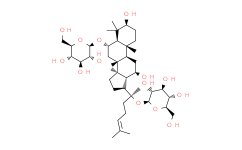In the inflamed joints of adjuvant-induced arthritis (AIA) rats, the level of p-IκBα and p-p65 is significantly higher than in controls and PPAR-γ levels are significantly lower. Treatment with Ginsenoside Rg1 in vivo inhibits IκBα phosphorylation, reduces NF-κB nuclear translocation and upregulates PPAR-γ expression. Ginsenoside Rg1 (G-Rg1) and Ginsenoside Rg2 (G-Rg2) reduce the escape latencies on the last two training days compared to the Alzheimers disease (AD) model group (p<0.05). In the spatial exploration test, the total time spent in the target quadrant and the number of mice that exactly crossed the previous position of the platform are clearly shorter and lower, respectively, in the AD model group mice than in the normal control group mice (p<0.01), a trend that is reversed by treatment with Ginsenoside Rg1 and Ginsenoside Rg2 (Ginsenoside Rg1, p<0.01; Ginsenoside Rg2, p<0.05). Treatment with Ginsenoside Rg1 and Ginsenoside Rg2 effectively improve cognitive function of the mice that have declined due to AD. Ginsenoside Rg1 and Ginsenoside Rg2 reduce Aβ1-42 accumulation in APP/PS1 mice. In the Ginsenoside Rg1 and Ginsenoside Rg2 treated mice, the pathological abnormalities observed in the APP/PS1 mice are gradually ameliorated. Clear nucleoli and light brown, sparsely scattered Aβ deposits are visible.
Medlife has not independently confirmed the accuracy of these methods. They are for reference only.



 扫码关注公众号
扫码关注公众号